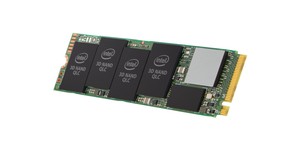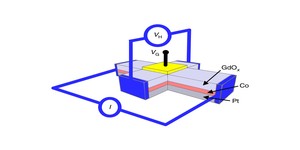Researchers boast of air-channel transistor breakthrough
November 20, 2018 | 11:25
Companies: #rmit-university

Researchers at Melbourne's RMIT University claim to have made a breakthrough in finding the material that could replace silicon in future processors: nothing at all.
As Intel, now four years late to its own 10nm party and counting, is discovering, the slavish adherence to Moore's Law - the observation by Intel co-founder Gordon Moore that the number of transistors on a leading-edge part tends towards a doubling every 18 months - is becoming increasingly challenging the smaller components get. As a result, the entire semiconductor industry is bracing itself for a move away from silicon to new materials that could allow Moore's Law to continue for a little while longer - though few can agree on exactly which of the numerous promising new technologies will be the one to replace existing silicon chips.
Researchers at RMIT University, though, claim that the replacement for silicon in processors could be nothing at all - or, more accurately, simply air. 'Every computer and phone has millions to billions of electronic transistors made from silicon, but this technology is reaching its physical limits where the silicon atoms get in the way of the current flow, limiting speed and causing heat,' explains Shruti Nirantar, lead author and PhD candidate from RMIT's Functional Materials and Microsystems Research Group, of her team's paper. 'Our air channel transistor technology has the current flowing through air, so there are no collisions to slow it down and no resistance in the material to produce heat. This technology simply takes a different pathway to the miniaturisation of a transistor in an effort to uphold Moore's Law for several more decades.'
The air-channel transistors work in a very similar manner to existing solid-channel transistors, but without wasting as much energy: 'Imagine walking on a densely crowded street in an effort to get from point A to B. The crowd slows your progress and drains your energy,' explains team leader Associate Professor Sharath Sriram. 'Travelling in a vacuum on the other hand is like an empty highway where you can drive faster with higher energy efficiency.'
Maintaining an actual vacuum in a chip without making each transistor absolutely massive, though, is rather too challenging for the concept to leave the lab and enter mass production. Enter the team's breakthrough: 'We address this by creating a nanoscale gap between two metal points,' explains Sriram. 'The gap is only a few tens of nanometres, or 50,000 times smaller than the width of a human hair, but it's enough to fool electrons into thinking that they are travelling through a vacuum and re-create a virtual outer-space for electrons within the nanoscale air gap.'
The technique, the team claims, is entirely compatible with current semiconductor fabrication and development processes, and has additional advantages beyond pushing at the edge's of Moore's Law - including being resistant to radiation, making it suitable for use in space.
The team's paper, Metal-Air Transistors: Semiconductor-free Field-Emission Air-Channel Nanoelectronics, has been published in the ACS Nano Letters journal.

MSI MPG Velox 100R Chassis Review
October 14 2021 | 15:04








Want to comment? Please log in.